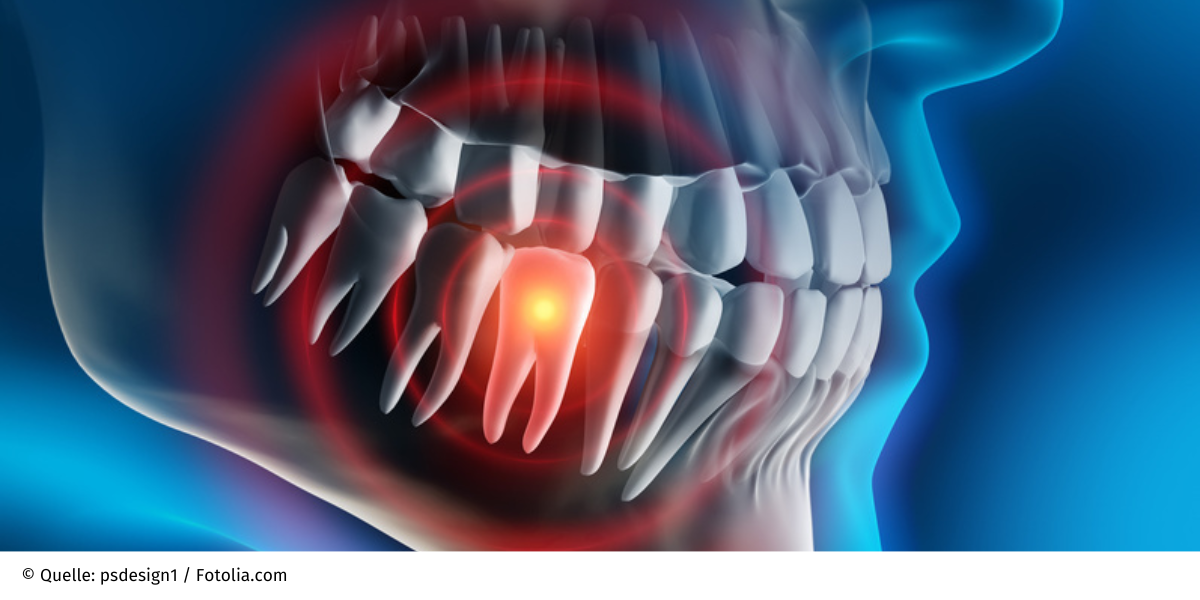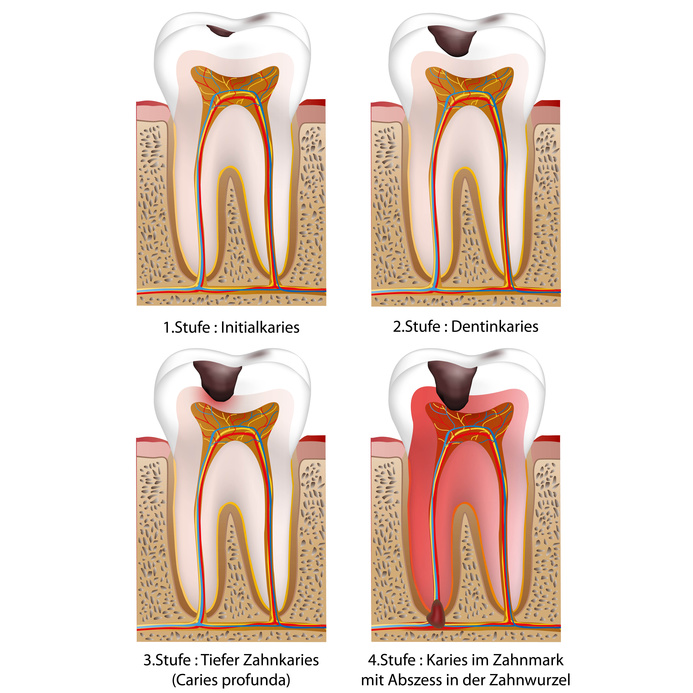On average, 2 in 10 12-year-olds have one or more teeth damaged by tooth decay. In the 1980s, an average of 7 teeth in this age group were decayed. In adults aged 35 to 44, on average about 11 teeth are affected by cavities, filled, crowned or missing. The majority of dental treatment costs are spent on removing cavity damage.
How is tooth decay treated?
The earlier tooth decay is discovered, the less tooth structure will have to be sacrificed. In the early stages, tooth decay can be recognized by white or brown spots on the teeth. It may be enough for the dentist to apply a fluoride gel or varnish, which promotes the reincorporation of minerals into the teeth. At home, you should brush your teeth on all sides with fluoride toothpaste, twice a day, for 2 minutes each.
A modern and minimally invasive method for early caries is infiltration. The dentist fills the porous areas with liquid plastic, which then hardens. This blocks tooth decay bacteria and prevents the cavity from progressing.
What does infiltration bring?
O Health Knowledge Foundation evaluated several studies on this. The result shows that infiltration together with general prophylactic measures can prevent early caries. However, the results are not completely reliable.
Furthermore, not all dentists offer this method. As part of an individual healthcare service (IGeL), for example, patients themselves have to pay the costs. It’s around 80 to 100 euros per tooth. Clinical studies on caries infiltration [1, 2] confirm that the procedure inhibits the development of cavities and thus recovers the initial costs that you will have to bear for later savings and oral health.
As the cavity progresses, it penetrates further into the tooth. Then, real holes are created, technically called cavities. To remove the destroyed parts of the tooth, they are drilled and then filled with fillings. If the tooth is more severely damaged, a partial crown or crown may be needed. If the nerves in your teeth are already damaged, you will usually need a Root canal treatment Be done.
What fillings are there?
Dental fillings can be divided into plastic fillings and inlay fillings. You can go out Amalgam, plastic mixtures, ceramic or gold alloy Be done.
Amalgam – a mixture of mercury, silver, tin and copper – is free as a filling. It is cheap, easy to process, has a long service life and is particularly suitable for large defects in the posterior area of the tooth. To date, there is no scientific evidence that amalgam fillings increase the risk of cancer or are causally linked to chronic or degenerative diseases, this is also emphasized by the German Dental Association;
Also the Cancer Information Service states that there is currently no scientific evidence of cancer risk from amalgam dental fillings. However, what can be harmful is mercury contained in excessive amounts. That’s why you are safe for children under 15, pregnant and lactating women: no amalgam fillings are used for them. Existing fillings should only be removed if there are no alternatives.
You can find out more about this in the article: “Damaging amalgam fillings children’s development?”


